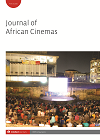
Full text loading...

This article is a contribution to the celebration the 50th anniversary of FESPACO. It is divided in two major parts. The first takes stock of some of the most important debates that have traversed the festival since its inception, offers a sense of the significance of the festival and its experience, briefly reviews the Black Camera volumes on FESPACO and introduces the unique essays commissioned for this Special Issue. The second half examines three important issues related to the future of FESPACO and African cinema more generally: the centrality of histories and memories with an examination of the new Classics section of the festival, the extraversion and dependency of the political economies of African cinema, their impact on the forms, circulation and reception of African cinema, and their significance for FESPACO, and, finally the urgent need to address questions of sovereignty and territorial integrity on the continent as sine qua non for the very existence, survival and blossoming of an African film and audiovisual industry, liable to continue and potentially complete the unfinished emancipatory project at the heart of the festival.

Article metrics loading...

Full text loading...
References


Publication Date:
https://doi.org/10.1386/jac_00059_1 Published content will be available immediately after check-out or when it is released in case of a pre-order. Please make sure to be logged in to see all available purchase options.